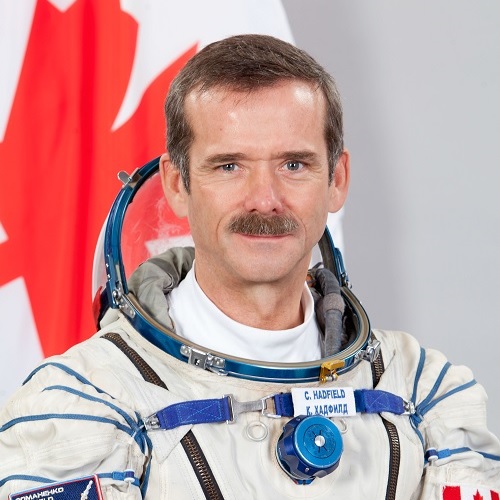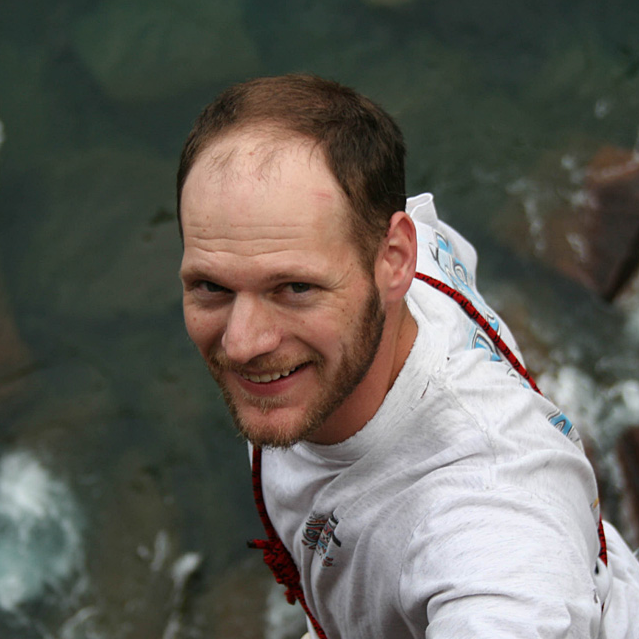| Line 15: | Line 15: | ||
<h2 style="text-align:center">Mission Control</h2> | <h2 style="text-align:center">Mission Control</h2> | ||
| − | <div id="Cartoons"><a href="#Hadfield"><img src="https://static.igem.org/mediawiki/2017/5/5d/Calgary2017_CartoonChris.png" alt="Chris Hadfield"></a><a href="#Thirsk"><img src="https://static.igem.org/mediawiki/2017/b/be/Calgary2017_CartoonThirsk.png"></a><a href="#Ramsay"><img src="https://static.igem.org/mediawiki/2017/d/d9/Calgary2017_CartoonBruce.png" alt="Bruce Ramsay"></a><a href="#Pascal"><img src="https://static.igem.org/mediawiki/2017/9/97/Calgary2017_CartoonPascal.png"></a><a href="#CarolNelson"><img src="https://static.igem.org/mediawiki/2017/4/45/Calgary2017_CartoonCarol.png"></a><a href="#Buckely"><img src="https://static.igem.org/mediawiki/2017/5/51/Calgary2017_CartoonBuckley.png"></a><a href="#DerekThomas"><img src="https://static.igem.org/mediawiki/2017/c/c9/Calgary2017_CartoonDerek.png"></a><a href="#DeKoning"><img src="https://static.igem.org/mediawiki/2017/f/f1/Calgary2017_CartoonJason.png"></a><a href="#LV"><img src="https://static.igem.org/mediawiki/2017/b/b2/Calgary2017_CartoonLV.png"></a><a href="#IanLewis"><img src="https://static.igem.org/mediawiki/2017/d/da/Calgary2017_CartoonIan.png"></a><a href="#Nassar"><img src="https://static.igem.org/mediawiki/2017/3/3c/Calgary2017_CartoonNashaat.png"></a><a href="#MacCallum"><img src="https://static.igem.org/mediawiki/2017/0/06/Calgary2017_CartoonJustin | + | <div id="Cartoons"><a href="#Hadfield"><img src="https://static.igem.org/mediawiki/2017/5/5d/Calgary2017_CartoonChris.png" alt="Chris Hadfield"></a><a href="#Thirsk"><img src="https://static.igem.org/mediawiki/2017/b/be/Calgary2017_CartoonThirsk.png"></a><a href="#Ramsay"><img src="https://static.igem.org/mediawiki/2017/d/d9/Calgary2017_CartoonBruce.png" alt="Bruce Ramsay"></a><a href="#Pascal"><img src="https://static.igem.org/mediawiki/2017/9/97/Calgary2017_CartoonPascal.png"></a><a href="#CarolNelson"><img src="https://static.igem.org/mediawiki/2017/4/45/Calgary2017_CartoonCarol.png"></a><a href="#Buckely"><img src="https://static.igem.org/mediawiki/2017/5/51/Calgary2017_CartoonBuckley.png"></a><a href="#DerekThomas"><img src="https://static.igem.org/mediawiki/2017/c/c9/Calgary2017_CartoonDerek.png"></a><a href="#DeKoning"><img src="https://static.igem.org/mediawiki/2017/f/f1/Calgary2017_CartoonJason.png"></a><a href="#LV"><img src="https://static.igem.org/mediawiki/2017/b/b2/Calgary2017_CartoonLV.png"></a><a href="#IanLewis"><img src="https://static.igem.org/mediawiki/2017/d/da/Calgary2017_CartoonIan.png"></a><a href="#Nassar"><img src="https://static.igem.org/mediawiki/2017/3/3c/Calgary2017_CartoonNashaat.png"></a><a href="#MacCallum"><img src="https://static.igem.org/mediawiki/2017/0/06/Calgary2017_CartoonJustin.png"></a><a href="#Bamsey"><img src="https://static.igem.org/mediawiki/2017/5/53/Calgary2017_CartoonMatt.png"></a><a href="#Saurbah"><img src="https://static.igem.org/mediawiki/2017/1/12/Calgary2017_CartoonSaurabh.png"></a><a href="#SuiLamWong"><img src="https://static.igem.org/mediawiki/2017/4/42/Calgary2017_CartoonSui.png"></a></div> |
<a class="anchor" id="Hadfield"></a> | <a class="anchor" id="Hadfield"></a> | ||
| Line 114: | Line 114: | ||
</div></div></div> | </div></div></div> | ||
| − | |||
| − | |||
| − | |||
| − | |||
| − | |||
| − | |||
| − | |||
| − | |||
| − | |||
| − | |||
| − | |||
<a class="anchor" id="LV"></a> | <a class="anchor" id="LV"></a> | ||
Revision as of 03:09, 31 October 2017
Integrated Human Practices
Below is a detailed list of the experts we spoke to while we were developing our constructs and process, the feedback they gave us, and specific areas of our project we integrated the feedback into.

Mission Control

COL. CHRIS HADFIELD
Profession: Former AstronautCanadian Space Agency
We received advice from Col. Chris Hadfield (and his dog, Albert) regarding the feasibility of our project on Mars, its integration into current endeavours and research into space exploration, and what we could do to improve our project's design to satisfy these key concerns. Chris reminded us that the "prime directive" to any space mission is the safety and survival of the crew. In addition, he provided us with insight regarding important policies and regulations to consider as we moved forward with our project. This included treaties and agreements released by the United Nations Committee on the Peaceful Uses of Outer Space (COPUOS).

CHANCELLOR DR. ROBERT THIRSK
Profession: Former AstronautCanadian Space Agency
The team met with Chancellor Robert Thirsk and discussed the demand for on-site manufacturing and recycling of solid human waste on Mars. Dr. Thirsk also provided us with advice regarding ways to improve our project's design while considering key issues commonly dealt with during space missions. One of the key issues that we discussed were In-Flight Maintenance Requirements, keeping in mind that any machine that is brought up and used in space should be one that can be easily repaired by crew members.

DR. MATTHEW BAMSEY
Profession: Chief Systems EngineerGerman Aerospace Center
Dr. Matthew Bamsey provided us with ESM: Basic information on the Equivalent System Mass documents. We used this information to compare different life support systems as we considered how to improve our project's design. Matt also directed us to Dr. Nicole Buckley of the Canadian Space Agency to gather more information to support the biological side of our project.

DR. NICOLE BUCKLEY
Profession: MicrobiologistCanadian Space Agency
Dr. Buckley helped us by identifying issues that we would need to resolve in the future for space travel . These issues include the potential for viral shedding from the feces resulting in increased disease prevalence onboard the spacecraft, as well as the potential for diminished bacterial growth due to a microgravity environment. Dr. Buckley also identified the need to bring all of our cell maintenance materials on board the spacecraft, pushing us towards our less material-intensive secretion recovery system as opposed to a lysis system.

DR. PASCAL LEE
Profession: Principal Investigator of the Haughton-Mars ProjectNASA Ames Research Center

DR. DEREK THOMAS
Profession: Senior Materials ScientistMade in Space, Inc.
We discussed our project with Derek Thomas from Made In Space, Inc., a company that developed the 3D printer currently in use on the International Space Station. Derek commented on the current uses of the 3D printer on the ISS, which include producing tools and other small items to assist with everyday operations. Having the capability to manufacture items on hand will be especially important on Mars because longer mission duration and distance will make it challenging to transport necessary materials. Derek also identified safety as one of the most important factors to consider when designing systems for space applications. When considering the use of PHB on Mars, Derek advised analyzing flammability, gassing characteristics, and other physical properties to identify the most suitable applications for our product. He suggested considering post-processing to obtain any desired characteristics that are lacking in pure PHB. Regarding materials that can be used to build the system itself, his advice was to first identify the desired requirements and operating conditions. Lastly, Derek commented on the use of Selective Laser Sintering (SLS) 3D printer. Although he does not foresee major concerns with the use of SLS 3D printer on Mars, controlling the powder at Mars' gravity might be more challenging. Additionally, exposure to lower atmospheric pressure has the potential to cause problems.

DR. NASHAAT NASSAR
Profession: Associate Professor, Chemical and Petroleum EngineeringUniversity of Calgary

DR. SUI LAM WONG
Profession: Professor, MicrobiologyUniversity of Calgary
Dr. Wong provided insight on antibiotic free containment, ultimately leading us to the auxotrophy system that we discuss in our Safety page. He also informed us on how to conduct protein expression assays through the use of an inducible promoter system so we could measure the activity of exogenous genes. He provided us with E. coli DH5𝛼 which he instructed us to use for the transformation and propagation of our ligated plasmids. He then provided us with E. coli BL21(DE3), a strain used specifically for protein expression. Lastly, he donated pET29B(+) to our team, a vector with an IPTG-inducible T7 promoter that was used in correspondence with E. coli BL21(DE3). With Dr. Wong's assistance, we were able to construct our plasmids and express recombinant proteins in a quantifiable manner.

DR. ELKE LOHMEIER-VOGEL
Profession: Senior Instructor, BiochemistryUniversity of Calgary
Dr. L-V was a regular attendee of our lab meetings wherein she provided us with insight regarding the alteration of biochemical pathways in E. coli. She directed us to consider the flux of incoming nutrients versus the output of bioplastic, as the metabolic pathways we employed to produce PHB are in direct competition with cell energy production. This allowed for the team to begin modelling flux balance analysis and kinetics to identify potential bottlenecks in our system, which has the potential to later allow us to optimize PHB production by genetic knockout or providing our bacteria with an alternate nutrient medium.

DR. JUSTIN MACCALLUM
Profession: Assistant Professor, TIER II CRC Biomolecular S & D, Physical & Theoretical ChemistryUniversity of Calgary

DR. BRUCE RAMSAY
Profession: Founder and CTOPolyferm
He encouraged us to pursue a lysis or secretion system due to its novelty, however cautioned that the final separation process is the most inefficient. Focusing on the increasing the final yield would be important from a marketing perspective.Currently there is not a high demand for bioplastics due to the cost of their porduction. Most medium chain polymers are used by businesses for experimentation, but not for large scale production. This information prompted our team to look towards which applications might benefit most from being able to produce plastic. We immediately thought of space, as the high cost of shipping materials would make a process that could produce plastic on site an attractive proposition. Furthermore, the ISS already uses 3D Printers so our product could be used to create useful materials for astronauts.

DR. IAN LEWIS
Profession: Assistant Professor, Metabolomics and BiochemistryUniversity of Calgary

DR. JASON DE KONInG
Profession: Assistant Professor, Bioinformatics, Biochemistry and Molecular BiologyUniversity of Calgary

DR. SAURABH JYOTI SARMA
Profession: Postdoctoral ScholarUniversity of Calgary

CAROL NELSON
Profession: Waste Management SpecialistAlberta Environment and Parks
Carol Nelson told us that leachate from industrial landfills have little to no organic content, which is not applicable to our project; however, the leachate from municipal landfills enters wastewater treatment plants and so would be safe to use as a feedstock. Currently, leachates with hazardous chemicals and metals enter deep well injections which are very cheap. If we applied our PHB production to landfills, they would have to compete with deep well injections, which due to the current low demand of PHB plastics might not be worth it from an economic perspective. Because of this information, we chose not to pursue a landfill leachate application at this time, but look forward to the possibilities of applying our project to this field in the future.





















